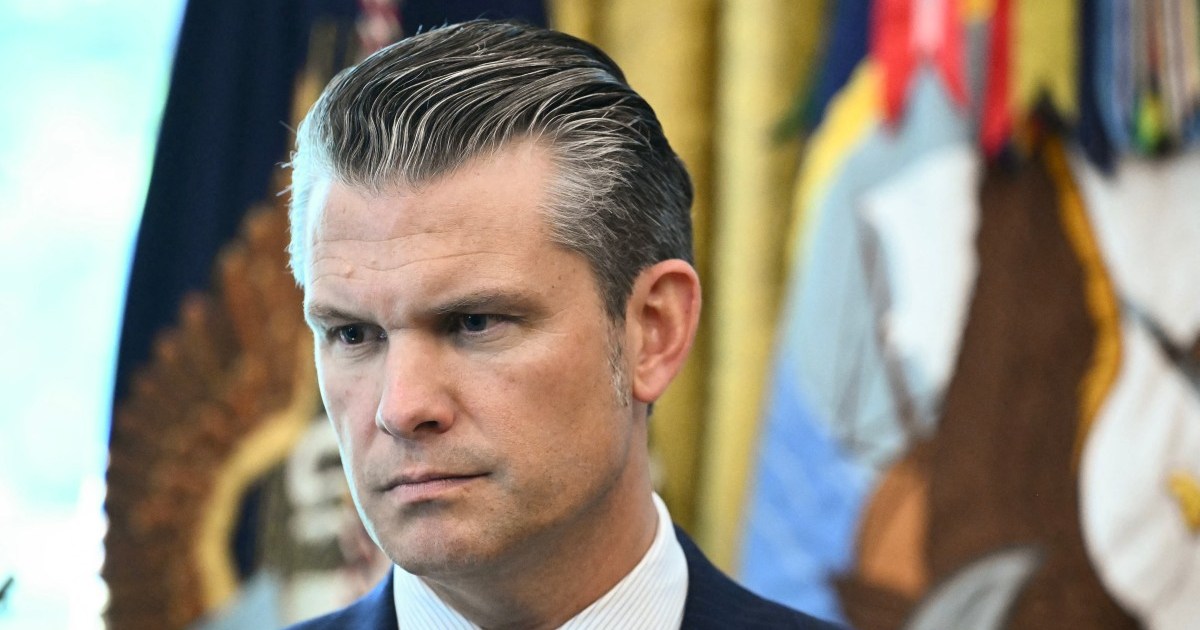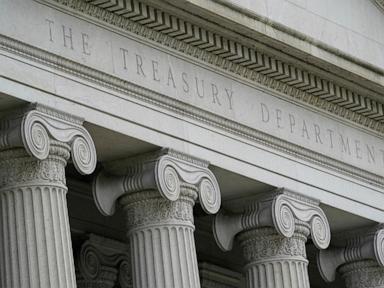
The Treasury Secretary has candidly admitted that the GDP numbers that dominated the previous administration’s economic approach are not accurate.
Scott Bessent said the Trump administration is focused on what the American public are actually feeling about the money in their pockets than Joe Biden‘s team.
The former hedge fund boss argued that Biden made a ‘mistake’ by dismissing the hardships that consumers were actually feeling at grocery stores and gas stations.
When asked point-blank whether he believed that GDP numbers and nonfarm payrolls were accurate on the All-In podcast last week, Bessent replied: ‘No. They’re subject to big revisions over time.
‘I thought one of the big mistakes of the Biden administration was that they went with the numbers and not what the American people were feeling.’
The Treasury Secretary said the economic concerns of the public were dismissed as merely a ‘vibe-cession’ and that Biden told them, ‘you don’t know how good you’ve got it.’
Instead, Bessent said the Trump administration was going to ‘have respect for how [the public] feel and then we need to go back and look at what is causing this anxiety.’
In the 2024 election, Americans’ highest-rated concern impacting their vote was the U.S. economy and their own personal financial hardships. Gas prices were at an all-time high and grocery bills increased by hundreds of dollars per month.
Treasury Secretary Scott Bessent says President Donald Trump’s administration is listening to Americans more than economic indicators to influence economic and financial policies
Americans say they feel the hurt in their wallets the most when it comes to grocery shopping and filling up their gas tanks
Since entering office, Trump has touted his team’s efforts to bring down the cost of gas and eggs, which surged to never-before-seen prices.
But Americans still don’t feel like they are in a better off financial situation and the country is spiraling towards a recession with the markets plummeting in recent weeks in the midst of a tariff war sparked between Trump and multiple U.S. trade partners.
Bessent said in his podcast interview that he’s making sure the administration is listening to Americans, and not just what they see on paper.
‘I was on Meet the Press yesterday,’ he recalled, ‘and there was something that said – ‘Well, the American people don’t believe Donald Trump’s doing enough on the economy.’ And I told the host, I said, ‘You know, the one thing I’m not going to answer is that they don’t know what they’re talking about.’
‘I have to have respect for how they feel, and then we need to go back and look at what is causing this anxiety,’ Bessent said, and vowed: ‘So that’s what that’s what we’re going to do.’
Podcast co-host Palihapitiya praised Trump’s team for having a ‘better beat on the fact that this data is not as reliable as other administrations would say they were in order to do whatever it is they wanted to do anyway.’
Bessent agreed with the interviewer, saying that the Trump White House would not use data to justify their actions and instead listen to Americans when they express anxiety or financial hurt.
Bessent (left) joined Chamath Palihapitiya (right) and David Friedberg (center) for an interview on their All-In Podcast last week
GDP and non-farm payroll are often two indicators used to assess how the economy is doing. The latter references the change in number of paid workers in all businesses and industries besides farming.
In February, the total U.S. nonfarm payroll rose by 151,000, according to the U.S. Bureau of Labor Statistics. It represents a slight increase from January where they nonfarm payroll rose by 143,000, but is a 1.24 percent improvement from last year’s stats.
Additionally, the unemployment rate improved only 0.3 percent with 4.1 percent Americans without a job.
Meanwhile, the GDP figure represents the total monetary value of all goods and services provided within a country’s borders over a specific period of time – usually a year.
This is the most commonly-used indicator of a country’s economic health.
In the fourth quarter of 2024, the U.s. GDP increased by 2.3 percent, according to the Bureau of Economic Analysis.
‘The increase in real GDP in the fourth quarter primarily reflected increases in consumer spending and government spending that were partly offset by a decrease in investment,’ the government analysis notes. ‘Imports, which are a subtraction in the calculation of GDP, decreased.’
An increase in GDP is generally an indication of a thriving and growing economy.
But Bessent notes how Americans claim they aren’t feeling that positive impact hit their pocket books.
The Federal Reserve Bank of Atlanta has tried to adjust to this and is providing a model with a rolling-update on the GDP that it claims will reflect the real-time changes month-to-month instead of yearly or by quarter.
‘Our GDPNow forecasting model provides a ‘nowcast’ of the official estimate prior to its release by estimating GDP growth using a methodology similar to the one used by the U.S. Bureau of Economic Analysis,’ the website notes.
Ever since this feature has been introduced, the GDP has tanked.
But many are skeptical of the so-called ‘nowcast’ and economists say it is not an accurate representations of the true GDP.
Americans are increasingly spooked as markets and investments continue to tank amid Trump’s trade war with multiple partners in Europe as well as Canada and China.
This month, Trump imposed a 25 percent tariff on Canada and Mexico and said it was a response to the countries’ refusal to act more aggressively on stopping the fentanyl crisis.
He also claimed that the North American countries take advantage of the U.S. while providing little benefit in return.
Canada has threatened and imposed retaliatory tariffs and the Chinese embassy says it is prepared for a trade war – or war of any kind – with the U.S.







